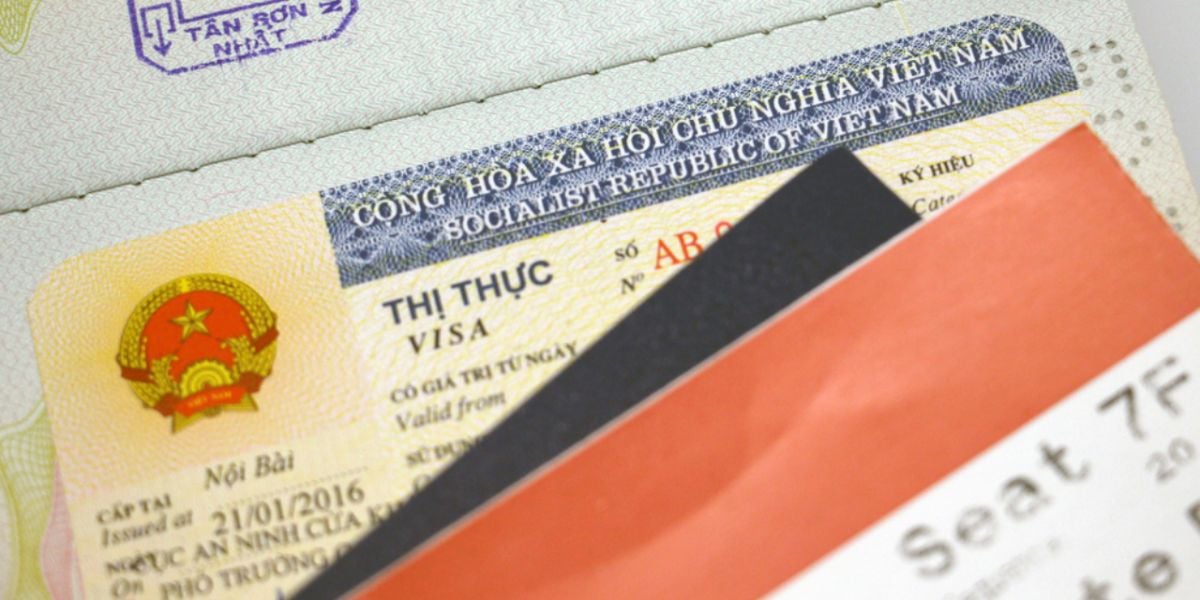
Having a visa to enter Vietnam is a mandatory process. Tourist visas are available from one to three months, and citizens of certain countries do receive visa-free arrival for forty-five days. This article will outline the different levels of visas available and how to complete the process stress-free.

Visa exemptions for Vietnam
Currently, Vietnam offers visa exemptions to citizens of 26 countries. Citizens from many nearby Southeast Asian countries, including Thailand, Malaysia, or Cambodia, are permitted to stay for up to 30 days without a visa of any kind. Filipino citizens receive a unique 21-day visa exemption. The UK and numerous members of the European Union were awarded 45-day visa exemptions as of August 2023.
Currently, anyone can apply for an e-visa to travel to Vietnam. However, your visa may be denied for the following reasons:
- Incomplete or incorrect documentation: If you require supporting documents and don't comply, then your visa may be denied, or the application paused until the correct documentation is received.
- Criminal record: drug-related or immigration-related offenses will immediately result in the application being denied.
- Invalid passport: A damaged passport or one with insufficient validity (less than six months) will be denied.
- Prior visa violations: Vietnam does not take prior violations lightly - especially within the country—and has something called the “black list.” You will be informed of being put on the “black list” and will need to pay outstanding fines or find a guarantor that can vouch for your travel.
- Incorrect personal information: Spelling mistakes or incorrect details in the application form, such as full name, passport number, date of birth, or passport photo issues.
- Visa type not supported: To save time, double-check which visa you are applying for and if it is the best fit for your upcoming journey. If you are applying for work, we encourage you to connect with the HR department for assistance.
- Applying too close to travel date: A tourist visa should only take 3-5 business days to process; however, you need to have the visa approved before boarding the flight. Possible things to consider that can cause delays include the Lunar New Year or civic holidays.
Types of visas for Vietnam
To avoid any complications or unexpected problems arriving in Vietnam, it is prudent to understand the different types of visas in Vietnam. Below, we will outline the different categories. Although there are several different types, there is no need to feel overwhelmed. The parameters of each category are straightforward.
The two most important criteria are the purpose of the visit and validity. New immigration regulations - Law No. 51/2019/QH14 - came into place in August 2023. Since then, Vietnamese visas have been categorized into 21 main types, with the most common types of visas including:
- Tourist visa (DL);
- Business visa (DN1, DN2);
- Student/internship visa (DH);
- Investor visa (DT1, DT2, DT3, DT4);
- Working visa (LD1 – LD2);
- 1-month single entry visa;
- 1-month multiple entry visa;
- 3-month single entry visa;
- 3-month multiple entry visa.
Tourist visa (DL)
This type of visa is for visitors planning to come to Vietnam for leisure purposes only. It does not permit the recipient to conduct any business matters during their stay. This means if you are a digital nomad, you do not match the requirements. Currently, Vietnam does not have a digital nomad or retirement visa option.
Investor visa (DT)
The investor visa is divided into four subcategories, and these classifications are based on the amount of capital the investor intends to bring:
DT1 – to be granted to foreign investors in Vietnam and representatives of foreign organizations investing in Vietnam with a capital contribution of at least VND100 billion or investing in the business fields and areas of investment incentives decided by the Vietnam Government. It is valid for up to 5 years.
DT2 – to be granted to foreign investors in Vietnam and representatives of foreign organizations investing in Vietnam with a capital contribution of VND50 – under VND100 billion, or investing in the business fields of investment encouragement decided by the Vietnam Government. It is valid for up to 5 years.
DT3 – to be granted to foreign investors in Vietnam and representatives of foreign organizations investing in Vietnam with a capital contribution of VND3 – under VND50 billion. It is valid for up to 3 years.
DT4 – to be granted to foreign investors in Vietnam and representatives of foreign organizations investing in Vietnam with a capital contribution of less than VND3 billion. Valid for up to 12 months.
Business visa (DN)
This is the second most common type of visa for Vietnam, and it is divided into two categories: DN1 and DN2.
The DN1 visa is offered to those who are coming to Vietnam to work with other organizations and businesses. For example, IT consultants may reside in Vietnam on these visas.
The DN2 visa is given to foreigners who come to Vietnam to establish their own business or commercial presence of some kind. Additionally, those who offer a particular service or perform specific roles under international treaties in collaboration with Vietnam would also qualify for this type of visa.
As with the tourist visas, foreigners arriving on Vietnam business visas will have numerous options in terms of duration. Citizens of the United States also have the option of purchasing the Vietnam 1-Year Multiple Entry Visa.
Student visa (DH)
For foreign visitors about to attend a university in Vietnam, you may need a visa to move forward with applying to universities. Students must apply for their visa after being accepted at the university. You will need to include a copy of the university acceptance in your visa application. Once approved, it will grant the student a 12-month visa and a DH temporary resident card. The student's passport must also be valid for at least one month after the 12 months of study.
Working visa (LD)
This type of visa is often acquired by international workers. If you are receiving an offer of employment, regardless of whether it's as an international teacher or in a different industry, this will be the visa you receive. It grants the holder the right to live and work in Vietnam for a period of up to 2 years. Furthermore, renewing this type of visa is a relatively easy process. The work visa has two categories:
The LD1 visa: given to foreigners who possess a work permit exemption certificate.
The LD2 visa: granted to those who require a work permit to work legally in Vietnam.
Obtaining this type of visa is simply a matter of requesting that your prospective employer arrange an LD approval letter. This must be done via the Vietnam Immigration Department. This document will then need to be stamped upon your arrival in Vietnam.
If you aren't currently in possession of a work permit or written confirmation of work permit exemption, you should consider applying for a business visa first.
Obtaining a work visa will be subject to two kinds of fees. The first will be for the visa approval letter. The second is the stamping fee. If you are arriving in Vietnam to work at a school or language center, your HR department should handle all of this paperwork for you.
Other types of visa
As mentioned earlier, Vietnam has several kinds of visas for foreign visitors.
The diplomat visa (NG) is awarded to foreign nationals at the behest of Vietnamese government officials of high rank or Vietnamese ministries. Visas of this nature are also given to consulate personnel liaising with Vietnamese authorities. These visas are not subject to any fees and are valid for a period of up to 12 months.
Other niche categories of visas include the Lawyer Visa (LS - max 5 years), Journalists with short-term residence in Vietnam (PV2 - 1 year), and family visits or other purposes for Vietnamese nationals (VR - 6 months).
How to arrange for your Vietnam visa
We recommend filing your visa independently unless you are crunched for time or have extenuating circumstances. There are local agents who can help you with the visa process, but it is also easy to complete online independently.
Before arranging your visa, make sure that your passport is valid for at least six months from the date of your arrival in Vietnam. Additionally, your passport needs two blank pages. Vietnamese immigration officers are meticulous during their documentation inspection and will not approve passports with any damage. This includes refusing to admit visitors because of torn pages or other wear and tear damage.
Fees for visas and approval letters vary, as some agencies include a modest commission. A multiple-entry visa is likely to cost 50 USD, and a single-entry visa is 25 USD. If you arrive via land border entry, you will need to complete a two-page form at immigration and have two passport photos plus the 25 USD stamping fee ready. When you arrive at the airport, you should have your arrival letter and visa printed from the online process. When you are departing from the previous airport, you will be asked to show these documents before being allowed to board. You will not be able to board a flight to Vietnam without proof of a visa or ongoing travel.
Takeaway
Vietnam is generally a safe country, but it is still advisable to remain on your guard. Arranging visas is one thing, but remember that Vietnam also has countless options for commuting. Discover how to spend your time, including the process of renting a car or a motorbike or what to eat while traveling in Vietnam!
Useful links:
We do our best to provide accurate and up to date information. However, if you have noticed any inaccuracies in this article, please let us know in the comments section below.








